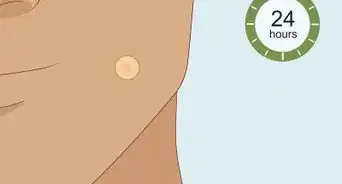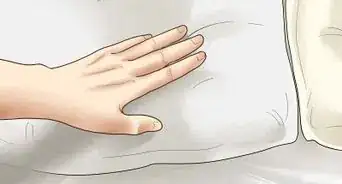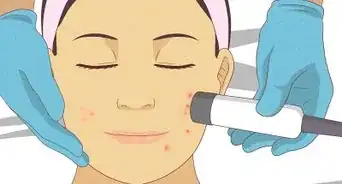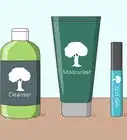This article was co-authored by Lisa Bryant, ND and by wikiHow staff writer, Danielle Blinka, MA, MPA. Dr. Lisa Bryant is Licensed Naturopathic Physician and natural medicine expert based in Portland, Oregon. She earned a Doctorate of Naturopathic Medicine from the National College of Natural Medicine in Portland, Oregon and completed her residency in Naturopathic Family Medicine there in 2014.
There are 8 references cited in this article, which can be found at the bottom of the page.
This article has been viewed 62,839 times.
Dealing with acne is frustrating, so you might be interested in trying home remedies. Apple cider vinegar removes dirt and oils and helps remove dead skin cells. Plus, it may kill acne-causing bacteria. While there’s no guarantee that apple cider vinegar will work, you might include it in your skincare routine as an acne treatment. If you want to try apple cider vinegar as an acne treatment, make a toner for spot treatment, create a mask for widespread acne, or drink it to help with a severe breakout. However, check with your doctor first and see your doctor if your acne isn’t improving.
Steps
Doing Spot Treatments with a Toner
-
1Wash your face with a mild cleanser so your skin is clean. Cleanse your skin before you apply the apple cider vinegar. Wet your face with warm water, then use your fingers to massage your cleanser into your face. Splash warm water onto your face to rinse off the cleanser.[1]
- Pick a cleanser that’s formulated for your skin type. If you have acne prone skin, look for one that helps treat acne.
-
2Mix 1 part apple cider vinegar with 3 parts water to make a toner. Use a measuring cup to add 1⁄4 cup (59 mL) of apple cider vinegar into a clean jar. Then, measure out 3⁄4 cup (180 mL) of water and add it to the jar. Stir the ingredients together to make a toner.[2]
- The water will dilute the apple cider vinegar so it’s less likely to damage your skin.
- Store your excess toner in your refrigerator.
Advertisement -
3Soak a cotton swab with apple cider vinegar toner. Dip a clean cotton swab into the apple cider vinegar toner. When the cotton is saturated, remove it from the toner and lightly squeeze off the excess toner.[3]
- Use a fresh cotton swab if you want to apply additional toner.
-
4Dab the toner directly onto your acne. Press the cotton swab onto your acne to apply it to your skin. Only apply the toner to areas where acne is present, as it might dry out your healthy skin.[4]
- Stop using the toner immediately if your skin starts to feel irritated.
-
5Rinse off the toner after 10 to 20 seconds. Let the toner sit on your skin for 10 to 20 seconds to allow the apple cider vinegar to work. Then, use warm water to wash off the apple cider vinegar. Make sure that you remove all of it so it doesn’t irritate your skin.[5]
- If you prefer, soak a cotton swab in water and use it to wipe off the toner.
Variation: Some people prefer to let the apple cider vinegar dry on their skin. However, this increases your risk of dryness and skin irritation.[6]
-
6Pat your face dry with a clean towel. After you rinse your face, dab your skin dry using a clean face towel. Always use a clean towel because a dirty towel might cause acne. Then, continue your normal skin care routine.[7]
- For instance, you might use a light facial moisturizer or an acne spot treatment.
-
7Use the toner once or twice a day to treat your acne. Apply your toner after you wash your face at night. If your skin tolerates it well, use your toner in the morning, as well. Continue to use your toner until your skin clears, which will likely take at least 4-8 weeks. However, keep in mind that apple cider vinegar toner doesn’t work for everyone.[8]
- Stop using the toner if you notice redness, itching, or irritation.
Using an Apple Cider Vinegar Mask
-
1Add apple cider vinegar, raw honey, and baking soda to a bowl. Use a measuring spoon to pour 1 tsp (4.9 mL) of apple cider vinegar into a bowl. Measure out 2 tsp (9.9 mL) of raw honey and add it to the bowl. Then, use the spoon to add 1 tsp (4 g) of baking soda to the mix.[9]
- The apple cider vinegar may kill germs and bacteria on your skin and could help exfoliate dead skin cells. The raw honey also helps kill bacteria and may moisturize your skin. Additionally, the baking soda helps clean and lighten your skin.
-
2Mix the ingredients until they become a thick paste. Use a spoon to stir the ingredients until you have a paste that's thick enough to apply as a mask. Make sure the ingredients are well-blended.[10]
- If it’s too thick, add a few drops of water to thin out the mask.
- If it’s too thin, add a sprinkle of baking soda to thicken it.
-
3Use your fingers to apply the mask to your face for 10 minutes. Scoop out a dollop of the mask using your fingertips and slather the mask on your face. Pay special attention to areas where you have acne. Set a timer for 10 minutes to allow the mask time to work.[11]
- If the mask dries out before the 10 minutes, go ahead and wash it off. Once it dries, the mask may dry out your skin.
-
4Wash off the mask using warm water. Splash your face with warm water to re-moisten the mask. Then, use your fingers to gently scrub the mask off of your face. Finally, rinse your face totally clean with warm water.[12]
- Don’t leave any mask residue on your skin, as it can dry out and irritate your skin.
-
5Pat your skin dry with a clean towel. Use a clean, dry face towel to blot away the excess water from your skin. Check your face again to make sure that you don’t have any of the mask remaining on your skin.[13]
- Always use a clean towel because a dirty towel could transfer acne-causing bacteria back onto your skin.
-
6Use the mask once or twice a week for clearer skin. For dry, normal, or combination skin, apply the mask once a week so that it doesn't overly dry your skin. If you have oily skin, do a mask treatment once or twice a week, depending on how your skin reacts to the mask. Over time, you may notice clearer skin.[14]
- Stop using or decrease how often you use the mask if your skin is dry, red, or itchy.
Drinking Apple Cider Vinegar
-
1Combine apple cider vinegar, water, honey, and a squeeze of lemon. Use a measuring spoon to add 2 US tbsp (30 mL) of apple cider vinegar to a glass. Then, use a measuring cup to pour in 12 fl oz (350 mL) of water. Then, add 1 teaspoon (4.9 mL) of honey and a squeeze of lemon. Stir the ingredients with a spoon until they’re well-blended.[15]
- If you’re using a fresh lemon for the juice, make sure you don’t squeeze a seed into the glass. If you do, scoop out the seed before you drink the mixture.
-
2Drink your apple cider treatment once a day before a meal. It’s best to drink it on an empty stomach so it absorbs into your body better. You can either sip the apple cider blend slowly, or you can gulp it down if you prefer. Do this once a day to possibly get clearer skin.[16]
- If you prefer, it’s okay to slowly sip the apple cider treatment over the course of several hours.
-
3Repeat daily until your breakout clears. You may notice clearer, brighter skin in a week or two. However, there’s no proof that apple cider vinegar improves your skin, so you may not notice results. Continue drinking it if it works for you.[17]
- If the apple cider vinegar blend irritates your throat or upsets your stomach, stop drinking it immediately.
When to Seek Medical Care
-
1Check with your doctor before using apple cider vinegar on your skin. While apple cider vinegar is a common household product, it might not be safe for you to use. It can affect people differently and may damage your skin. Talk to your doctor before you use apple cider vinegar to make it safe for you.[18]
- Tell your doctor that you want to use apple cider vinegar to treat your acne.
-
2Get immediate care if you have an allergic reaction. Apple cider vinegar may cause burns if it’s not properly diluted. Additionally, you might experience an allergic reaction to it. If this happens, it’s best to check with your doctor to make sure you don’t need medical care. Call or visit your doctor if you have the following symptoms of a reaction:[19]
- Redness, burning, or irritation
- Swelling
- Tightness in your throat
- Feeling faint
-
3Visit your doctor if your acne doesn’t improve in 4-8 weeks. It typically takes 4-8 weeks for your acne to improve with home treatments. If your acne isn’t improving after a month of using apple cider vinegar, you might need other treatments. Talk to your doctor or dermatologist about your options.[20]
- Your doctor might recommend you try over-the-counter treatments before you use a prescription treatment.
-
4See a dermatologist if you have cystic or nodule acne. Unfortunately, cystic or nodule acne is more severe and may cause scarring. Additionally, it’s often caused by a hormonal imbalance or bacteria that’s deep under your skin, so topical treatments may not work on it. Ask your dermatologist if you may need an oral acne treatment to help clear your skin.[21]
- Your doctor may prescribe an oral antibiotic to help clear your acne.
- If your acne is caused by hormonal fluctuations, your doctor may prescribe hormonal birth control.
Expert Q&A
-
QuestionCan the acv burn one's face?
 Lisa Bryant, NDDr. Lisa Bryant is Licensed Naturopathic Physician and natural medicine expert based in Portland, Oregon. She earned a Doctorate of Naturopathic Medicine from the National College of Natural Medicine in Portland, Oregon and completed her residency in Naturopathic Family Medicine there in 2014.
Lisa Bryant, NDDr. Lisa Bryant is Licensed Naturopathic Physician and natural medicine expert based in Portland, Oregon. She earned a Doctorate of Naturopathic Medicine from the National College of Natural Medicine in Portland, Oregon and completed her residency in Naturopathic Family Medicine there in 2014.
Licensed Naturopathic Physician Apple cider vinegar may cause irritation and could increase inflammation if you apply it undiluted. Make sure to follow the instructions for diluting it that are in this article.
Apple cider vinegar may cause irritation and could increase inflammation if you apply it undiluted. Make sure to follow the instructions for diluting it that are in this article. -
QuestionIs it ok to wash your face with warm water, then use apple cider vinegar on it for 20 mins, and then rinse it off?
 Lisa Bryant, NDDr. Lisa Bryant is Licensed Naturopathic Physician and natural medicine expert based in Portland, Oregon. She earned a Doctorate of Naturopathic Medicine from the National College of Natural Medicine in Portland, Oregon and completed her residency in Naturopathic Family Medicine there in 2014.
Lisa Bryant, NDDr. Lisa Bryant is Licensed Naturopathic Physician and natural medicine expert based in Portland, Oregon. She earned a Doctorate of Naturopathic Medicine from the National College of Natural Medicine in Portland, Oregon and completed her residency in Naturopathic Family Medicine there in 2014.
Licensed Naturopathic Physician If you're applying apple cider vinegar as a mask (like the one discussed in this article), your skin gets the biggest benefit from the mask during the first 10 minutes it's on your skin. There's not much benefit to leaving it on for longer than 10 minutes, and it might dry out your skin.
If you're applying apple cider vinegar as a mask (like the one discussed in this article), your skin gets the biggest benefit from the mask during the first 10 minutes it's on your skin. There's not much benefit to leaving it on for longer than 10 minutes, and it might dry out your skin. -
QuestionWhat happens if you don't mix the ACV with water?
 Lisa Bryant, NDDr. Lisa Bryant is Licensed Naturopathic Physician and natural medicine expert based in Portland, Oregon. She earned a Doctorate of Naturopathic Medicine from the National College of Natural Medicine in Portland, Oregon and completed her residency in Naturopathic Family Medicine there in 2014.
Lisa Bryant, NDDr. Lisa Bryant is Licensed Naturopathic Physician and natural medicine expert based in Portland, Oregon. She earned a Doctorate of Naturopathic Medicine from the National College of Natural Medicine in Portland, Oregon and completed her residency in Naturopathic Family Medicine there in 2014.
Licensed Naturopathic Physician If you don't dilute it with water, ACV can dry out your skin and cause irritation. As a result, it might make your acne more red and inflamed.
If you don't dilute it with water, ACV can dry out your skin and cause irritation. As a result, it might make your acne more red and inflamed.
Warnings
- Apple cider vinegar is a strong acid, so it can burn your skin. Always dilute it before applying it to your skin.[24]⧼thumbs_response⧽
References
- ↑ https://www.aad.org/self-care#treatment
- ↑ https://www.wellandgood.com/good-looks/apple-cider-vinegar-for-acne/
- ↑ https://www.wellandgood.com/good-looks/apple-cider-vinegar-for-acne/
- ↑ https://www.mindbodygreen.com/0-13304/how-i-cured-my-acne-with-apple-cider-vinegar.html
- ↑ https://www.wellandgood.com/good-looks/apple-cider-vinegar-for-acne/
- ↑ https://www.mindbodygreen.com/0-13304/how-i-cured-my-acne-with-apple-cider-vinegar.html
- ↑ https://www.aad.org/self-care#treatment
- ↑ https://www.mindbodygreen.com/0-13304/how-i-cured-my-acne-with-apple-cider-vinegar.html
- ↑ https://www.remediesforme.com/make-homemade-diy-face-masks-acne/
- ↑ https://www.remediesforme.com/make-homemade-diy-face-masks-acne/
- ↑ https://www.insider.com/how-to-use-apple-cider-vinegar-beauty-2018-7#get-your-glow-on-with-an-acne-fighting-face-mask-7
- ↑ https://www.insider.com/how-to-use-apple-cider-vinegar-beauty-2018-7#get-your-glow-on-with-an-acne-fighting-face-mask-7
- ↑ https://www.aad.org/self-care#treatment
- ↑ https://www.remediesforme.com/make-homemade-diy-face-masks-acne/
- ↑ https://www.marieclaire.com/fashion/a12354/acne-apple-cider-vinegar/
- ↑ https://www.marieclaire.com/fashion/a12354/acne-apple-cider-vinegar/
- ↑ https://www.marieclaire.com/fashion/a12354/acne-apple-cider-vinegar/
- ↑ https://www.wellandgood.com/good-looks/apple-cider-vinegar-for-acne/
- ↑ https://www.mayoclinic.org/diseases-conditions/acne/symptoms-causes/syc-20368047
- ↑ https://www.aad.org/self-care#treatment
- ↑ https://www.mayoclinic.org/diseases-conditions/acne/symptoms-causes/syc-20368047
- ↑ https://www.aad.org/self-care#treatment
- ↑ https://www.aad.org/self-care#treatment
- ↑ https://www.ncbi.nlm.nih.gov/pmc/articles/PMC1785201/
About This Article
Apple cider vinegar is great for removing dirt and oil from your skin and treating acne. To spot treat your acne, first, mix together 1 part apple cider with 3 parts water. Soak a cotton swab in this mixture and dab it directly onto your acne. Let it sit on your skin for 10 to 20 seconds. Then, use warm water to rinse your face and pat it dry with a clean towel. You can do this spot treatment once or twice a day. Besides making a spot treatment, you can use apple cider vinegar to make a face mask. Simply mix together 1 teaspoon of apple cider vinegar, 2 teaspoons of raw honey, and 1 teaspoon of baking soda. Use your fingers to apply the mask to your face, then let it sit for 10 minutes. Wash off the mask with warm water and pat your skin dry with a towel. You can use this mask once or twice per week. To learn how to seek medical treatment for your acne, read more from our Medical co-author.
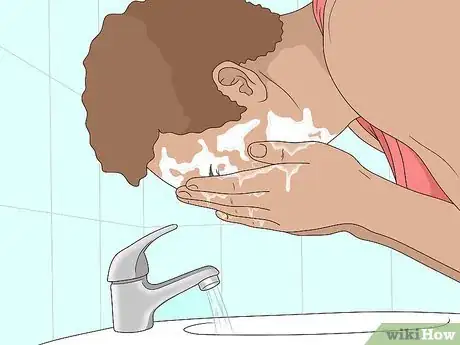
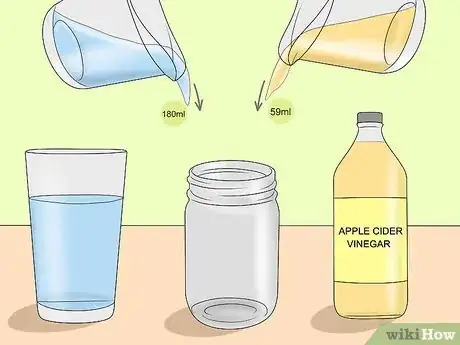
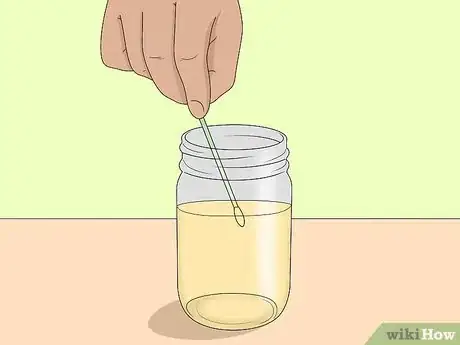

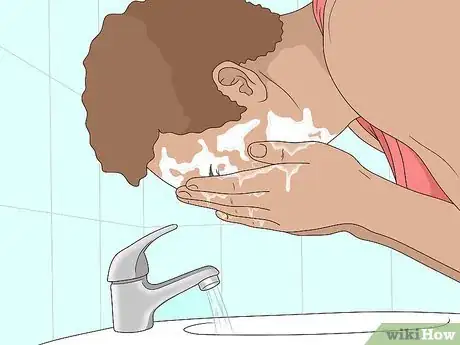
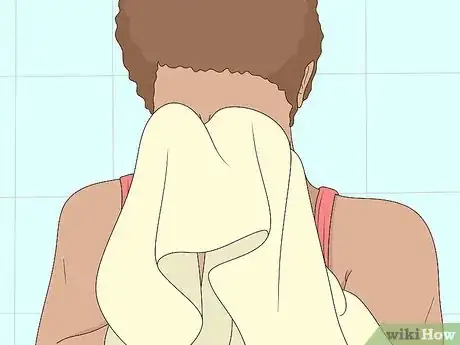

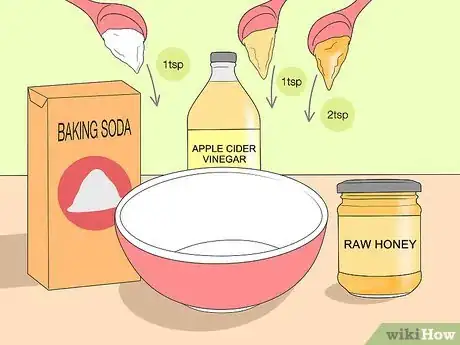
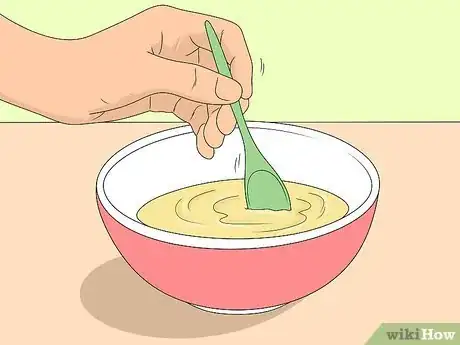


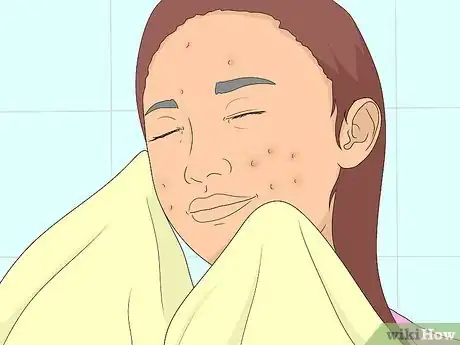
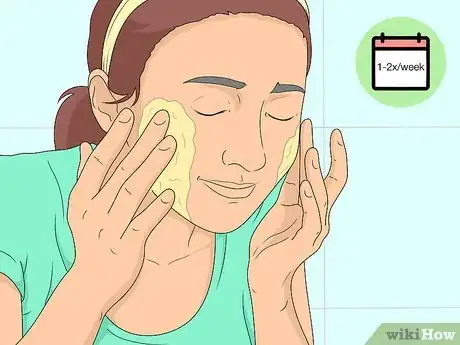
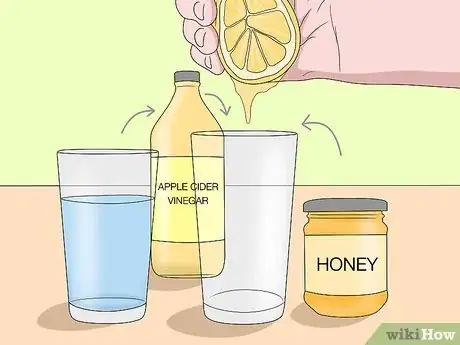
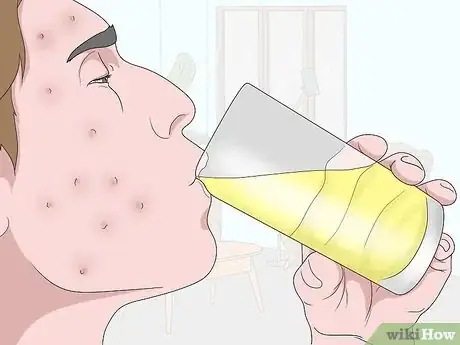
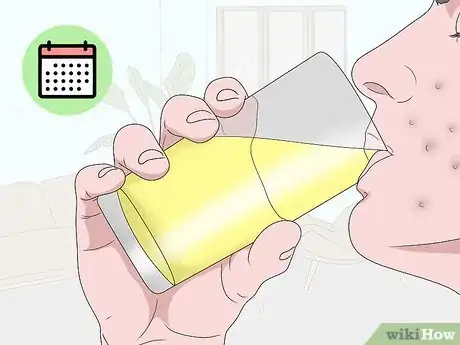

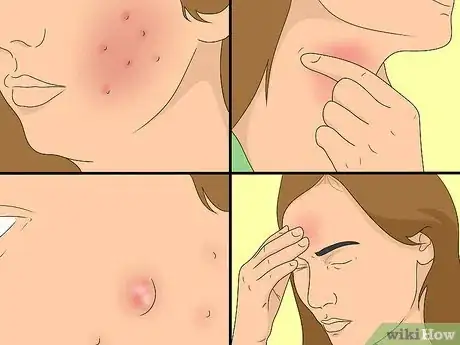

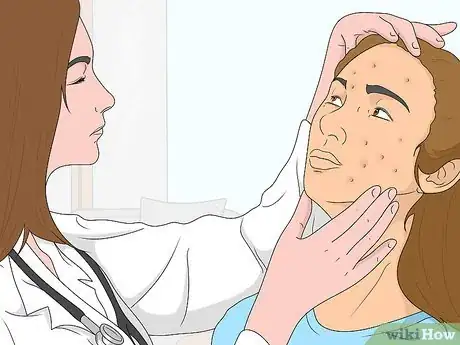

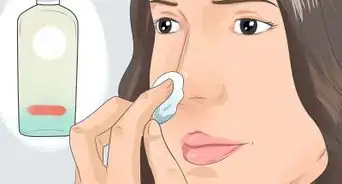
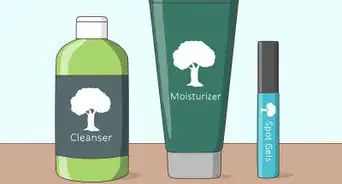

-Step-8-Version-2.webp)



